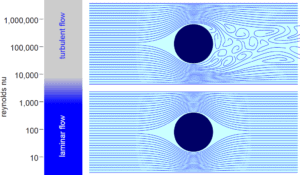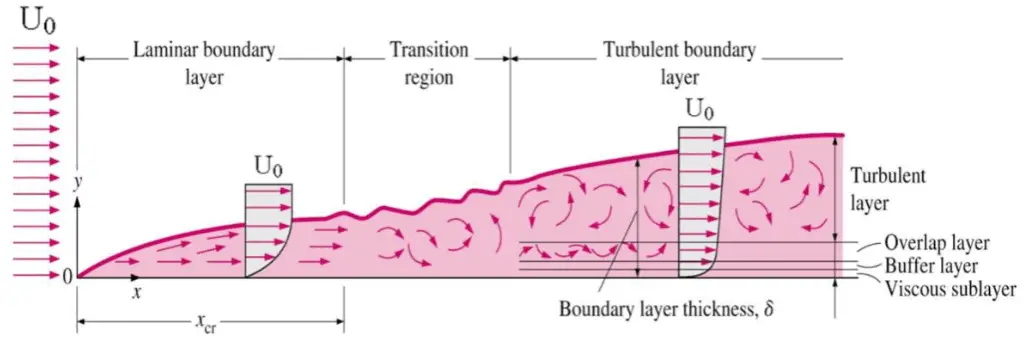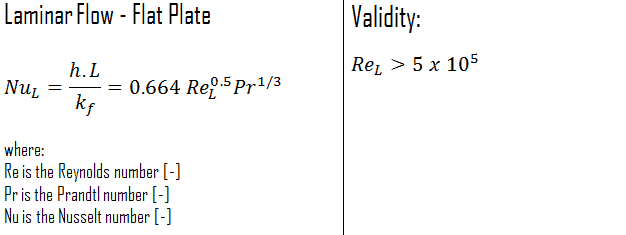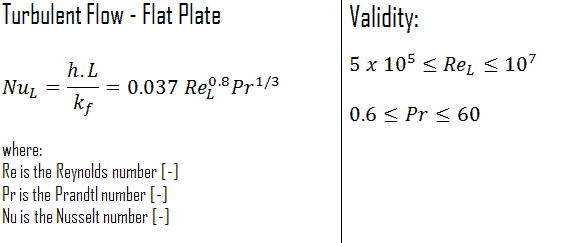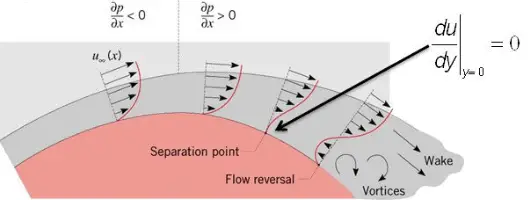External Flow
In fluid dynamics, external flow is such a flow in which boundary layers develop freely, without constraints imposed by adjacent surfaces. In comparison to internal flow, entrance flows and external flows feature highly viscous effects confined to rapidly growing “boundary layers” in the entrance region, or to thin shear layers along the solid surface. Accordingly, there will always exist a region of the flow outside the boundary layer. In this region velocity, temperature, and/or concentration does not change in and their gradients may be neglected.
This effect causes the boundary layer to be expanding and the boundary-layer thickness relates to the square root of the fluid’s kinematic viscosity.
This is demonstrated on the following picture. Far from the body the flow is nearly inviscid, it can be defined as the flow of a fluid around a body that is completely submerged in it.
Fluid Flow over a Flat Plate
In general, when a fluid flows over a stationary surface, e.g. the flat plate, the bed of a river, or the wall of a pipe, the fluid touching the surface is brought to rest by the shear stress to at the wall. The region in which flow adjusts from zero velocity at the wall to a maximum in the main stream of the flow is termed the boundary layer. The concept of boundary layers is of importance in all of viscous fluid dynamics and also in the theory of heat transfer.
Basic characteristics of all laminar and turbulent boundary layers are shown in the developing flow over a flat plate. The stages of the formation of the boundary layer are shown in the figure below:
Boundary layers may be either laminar, or turbulent depending on the value of the Reynolds number.
See also: Boundary Layer
Tube in crossflow
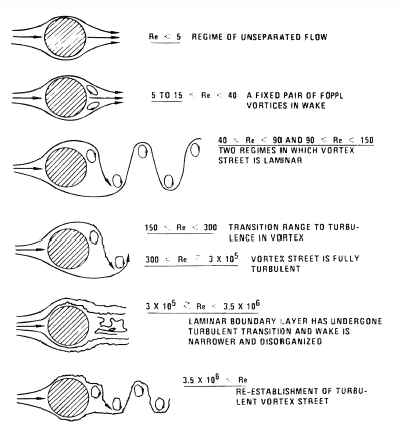
The crossflow of tubes or cylinders shows many flow regimes, that are dependent on the Reynolds number.
- ReD < 5. At Reynolds numbers below 1 no separation occurs.
- 5 ≤ ReD ≤ 45. In this Reynolds number range the flow separates from the rear side of the tube and a symmetric pair of vortices is formed in the near wake.
- 40 ≤ ReD ≤ 150. In this Reynolds number range the wake becomes unstable and vortex shedding is initiated.
- 150 < ReD < 300. In this Reynolds number range is the flow transitional and gradually becomes turbulent as the Reynolds number is increased.
- 300 < ReD < 1.5·105. This region is called subcritical. The laminar boundary layer separates at about 80 degrees downstream of the front stagnation point and the vortex shedding is strong and periodic.
- 2·105 < ReD < 3.5·106. Three-dimensional effects disrupt the regular shedding process and the spectrum of shedding frequencies is broadened. With a further increase of ReD, the flow enters the critical regime.
- ReD > 3.5·106. This regime is called supercritical. In this regime a regular vortex shedding is re-established with a turbulent boundary layer on the tube surface.
We hope, this article, External Flow, helps you. If so, give us a like in the sidebar. Main purpose of this website is to help the public to learn some interesting and important information about thermal engineering.
